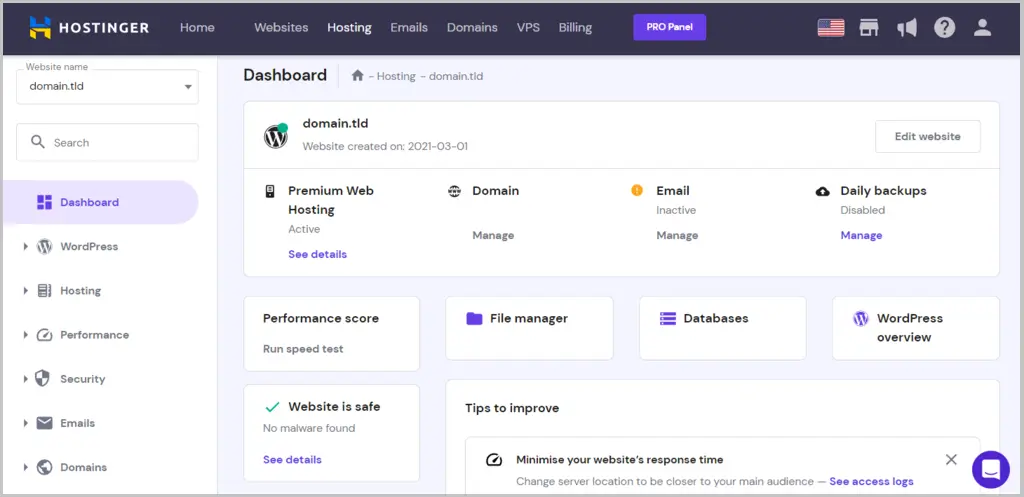Introduction:
In today’s fast-paced digital era, having a website is more than just a luxury; it’s a necessity. Understanding how to host a website is the cornerstone of bringing your online vision to life, and connecting you with audiences worldwide. Whether you’re an aspiring entrepreneur, a budding blogger, or a seasoned professional, establishing an online presence is paramount to success. However, the journey from conceptualizing your website to making it accessible to the world involves a crucial step: hosting.
How to Host A Website:
Picture this: you’ve built an awesome website like a cool lemonade stand with delicious recipes and fun decorations. But where would you put it for everyone to see and enjoy your creations? That’s where web hosting comes in!
What is Web Hosting?
Imagine it like renting a place in a big online mall, where all the websites hang out. Your website’s files, pictures and everything else lives there, ready to be discovered by anyone who visits the mall. Without web hosting, your website would be like that awesome lemonade stand hidden in your backyard – no one would know it exists! So, web hosting makes your website visible and accessible to everyone online, just like having a storefront in the digital world.
Just as there are different types of properties in the real estate world, there are various hosting options tailored to meet diverse needs:
Types of Hosting
Shared Hosting:
Shared hosting utilizes a single physical server to host multiple websites. Resources like CPU, RAM, and storage are allocated among users, making it an economical option for low-traffic sites. Shared hosting offers limited scalability. Performance can fluctuate during peak traffic periods due to resource sharing, impacting website loading times and responsiveness.

Ideal for:
- Starting a new blog
- Small business website
Virtual Private Server (VPS):
VPS utilizes virtualization technology to partition a single physical server into multiple virtual servers, each with dedicated resources like CPU, RAM, and storage. This provides improved isolation and performance compared to shared hosting. VPS Hosting offers greater scalability than shared hosting. Resources can be scaled up or down as needed to accommodate website growth or fluctuating traffic.

Ideal for:
- Medium-sized businesses
- Popular blogs
- eCommerce stores
Dedicated Hosting:
Dedicated hosting provides exclusive use of a physical server. All resources, including CPU, RAM, storage, and bandwidth, are dedicated to your website, offering unparalleled performance and control. Dedicated servers offer the highest level of scalability. You can upgrade hardware components or rent additional servers to meet your website’s growing demands.

Ideal for:
- Enterprise-level businesses
- Hugely popular websites
- eCommerce stores
Cloud Hosting:
Cloud hosting is a cutting-edge solution that leverages the power of virtualization and distributed computing. Instead of relying on a single physical server, cloud hosting utilizes a network of interconnected servers, often spread across different geographical locations. This dynamic infrastructure enables seamless scalability and flexibility, allowing resources to be allocated or scaled down based on website demands. The distributed nature of cloud hosting enhances reliability, as websites can seamlessly switch to alternate servers in case of hardware issues. Additionally, users pay for the resources they use, offering a cost-effective and efficient solution for websites with varying traffic patterns or dynamic resource requirements.

Ideal for:
- Websites with fluctuating traffic
- Seasonal demands, or unpredictable growth
- Media-rich websites
- Applications
It May Helpful: How to Choose the Right Tech Stack for My Web Development Projects
Domain and DNS Setup: Essential Steps for Hosting
You developed a website with an amazing and super catchy design. Now, people need to find it, right? That’s where your domain and DNS come in. Think of them as the address and GPS for your online store!
Your Domain: This is the unique name people type into their browsers to visit your website. It’s like your site’s catchy name, something short, sweet, and memorable. Such as nodechamp.com or JewelAcc.com
Domain names consist of two parts: a Top-Level Domain (TLD) like “.com” or “.org” and a Second-Level Domain (SLD) that forms your actual address. Choose a TLD relevant to your target audience or website purpose. For SLDs, prioritize brevity, memorability, and keyword relevance. There are several free tools available that help with suggestions and check availability.
Your DNS: The Domain Name System (DNS) works like the phonebook of the Internet. When we search for something online, we type in domain names like nytimes.com or espn.com. But behind the scenes, web browsers use Internet Protocol (IP) addresses to find websites. DNS steps in and translates these domain names into IP addresses so our browsers can load up the right web pages.
Think of it as the behind-the-scenes magic that turns your website’s name into its actual location on the Internet. It’s a bit like the GPS in your phone that uses an address to guide you to the right place. This system saves us from having to remember long strings of numbers, known as IP addresses.
So, how do you set these up? Don’t worry, it’s easier than baking the perfect pizza! Most website hosting providers offer tools to help you register your domain name and manage your DNS settings.
Here’s the important part: don’t skip this step! Just like having a wrong address makes it hard to find a destination, incorrect domain, and DNS settings can leave your website invisible online.
Remember, a rockin’ website starts with a solid foundation. Get your domain and DNS dialed in, and soon you’ll be serving up your website awesomeness to the world!
How to Upload a Website?
Now that you’ve got your domain name (which is like the website’s home address) and hosting (it is the website’s online home), it’s time to upload all files of your website to go live! There are different ways to do it, depending on the control panel that your hosting provider uses.
cPanel

This special panel is designed specifically for Linux operating systems. It’s pretty cool because it has both a graphical interface and a server management interface called WHM (Web Host Manager). Since these two work hand in hand, you can manage your website using either of them.
cPanel is loaded with tons of features, and the best part is they’re all well organized on one page. This makes it super easy to find what you’re looking for without having to click through a bunch of menus. Plus, each feature comes with a little description explaining what it does. Here are some of the main things you can do with cPanel:
- Set up, register, or transfer domain names
- Create and manage email accounts, set up spam filters, autoresponders, and email forwarding
- Check out visitor and error logs
- Create and manage databases
- Beef up your website’s security with features like IP blocking, leech protection, and password-protected directories
- Keep an eye on your server’s performance
- Set up backups and even automate the process
- Manage your files and create FTP users
- Access a bunch of third-party apps and tools to add extra functionality to your website.
- SSL Certificates
hPanel

hPanel is a specialized control panel created specifically for Hostinger users. It’s like your website’s command center, and it comes automatically installed with all Hostinger hosting services.
When you log into hPanel, you’ll see a list of all your Hostinger products right on the front page. From your hosting plans to your email accounts and websites, everything is well organized and easily accessible. You can even handle tasks like renewing or upgrading your services directly from hPanel.
Once you dive into the hosting management section, you’ll find a treasure trove of useful features. You’ll get insights into your website’s performance, alerts about any potential malware threats, and tips on how to make improvements. And if you need to tweak your hosting files, you can do it right from hPanel’s File Manager, no need for complicated FTP or SSH setups.
But that’s not all! hPanel is packed with handy tools to help you manage every aspect of your website:
- Databases: Create and manage MySQL databases with ease, using the included phpMyAdmin tool.
- Email accounts: Set up new email addresses, forwards, aliases, and automatic replies in just a few clicks.
- Backup: Keep your website safe by regularly backing up your files and databases, and restoring them whenever you need to.
- Content Delivery Network (CDN): Speed up your website’s loading times with Hostinger’s built-in CDN, available with certain hosting plans.
Plesk

Plesk is like a super handy remote control for your VPS hosting. It comes with an easy-to-use interface that makes managing your website a breeze. With Plesk, you can handle everything from your website files to your email accounts, all from one convenient dashboard.
It’s known for being super simple to use, but it’s also packed with awesome features that make managing your server even easier. Here are some cool things you can do with Plesk:
- Task Automation: You can set up tasks to run automatically, like running a command or a script, saving you time and effort.
- Restricted Access Mode: This feature lets you control who can access your control panel, keeping your server safe from unwanted visitors.
- Advanced Monitoring: Plesk helps you keep an eye on how many resources your website is using, so you can spot any performance issues early on.
- Repair Kit: If something goes wrong, Plesk has your back. It can diagnose problems and even fix them for you automatically.
- SSL It!: With Plesk, you can easily set up SSL certificates to keep your website secure, right from the dashboard.
Plesk works with lots of different operating systems, like Windows Server and various flavors of Linux. Right now, there are two versions of Plesk available: the older Onyx version and the newer Obsidian version.
DirectAdmin

DirectAdmin is a hosting control panel that works with Linux and BSD(Berkeley Software Distribution) systems. Everything you need is neatly organized and easy to find at the top of the screen. Plus, DirectAdmin offers different access levels: Administrator, User, and Reseller. It even comes with handy built-in tools to help keep spam at bay, and you can easily check out how much of each resource you’re using.
But what makes DirectAdmin popular is how simple it is to use. You don’t need to be a techy to figure it out. Plus, it’s packed with useful features, including:
- Managing your website’s domain name system (DNS)
- Creating and managing databases
- Setting up and managing reseller accounts
- Creating backups to keep your data safe
- Easily handling all your files
Webmin

Webmin is a web panel that works with Unix systems. That makes it a versatile tool for managing websites. While it’s also available for Windows, it might not offer all its features on this operating system.
Even though Webmin’s design may not be the easiest to navigate at first, it offers high levels of customization. For instance, it comes with an Apache web server, which allows users to configure Apache settings and features to suit their needs. Additionally, its developers have created specialized panels based on cPanel for various purposes and hosting types:
- Usermin: This web interface is perfect for managing emails, setting up mail filters, passwords, and more.
- Cloudmin: It provides a user-friendly interface for managing virtual servers, making it easier to handle cloud-based hosting solutions.
- Virtualmin: Used to manage multiple virtual hosts, similar to other popular control panels like Plesk. It’s great for users who need to oversee several websites from a single interface.
Final Thought on How to Host a Website
Hosting a website is not just a technical endeavor; it’s a journey of creativity, innovation, and empowerment. By understanding the fundamentals of web hosting, embracing the right hosting solution for your needs, and following the steps outlined in this guide, you can now understand how to host a website.
Ultimately, hosting a website is not just about creating an online platform; it’s about sharing your ideas, passions, and creations with the world. So, embrace the journey, be patient with yourself, and enjoy the process of bringing your website to life. With dedication, perseverance, and a touch of creativity, you’ll soon find yourself navigating the digital landscape with confidence and success.















